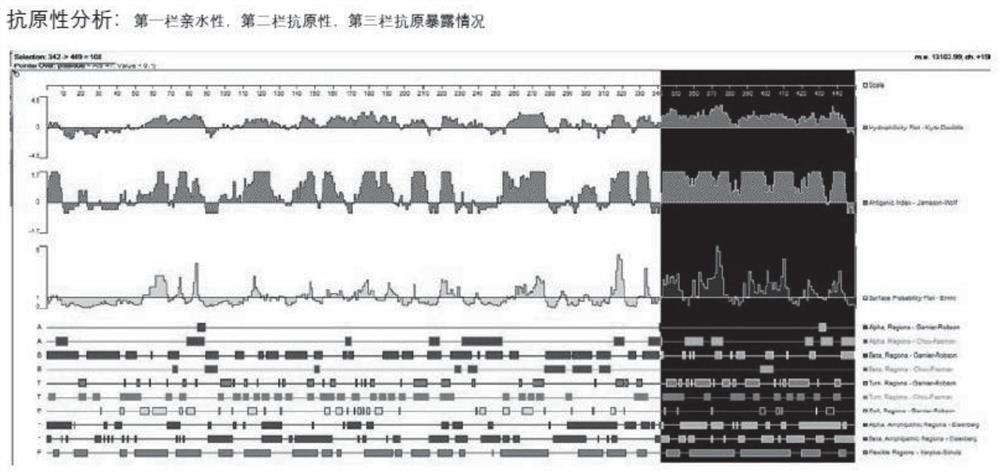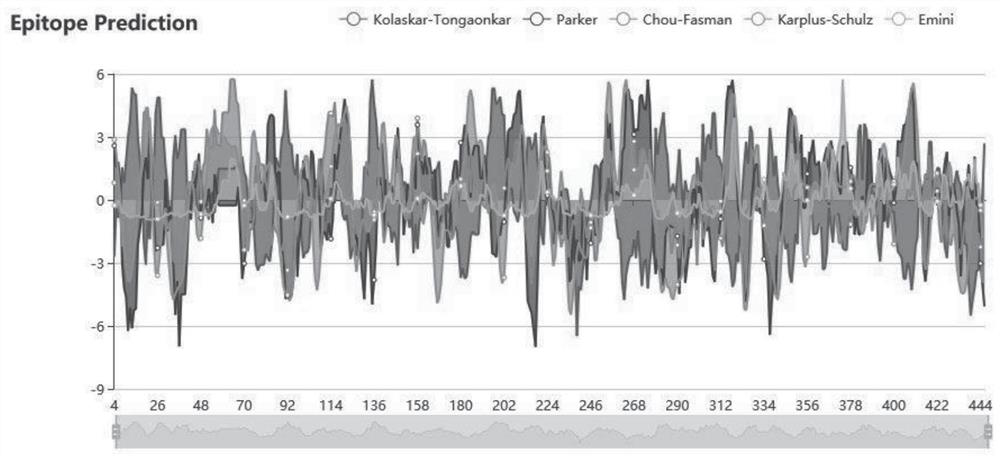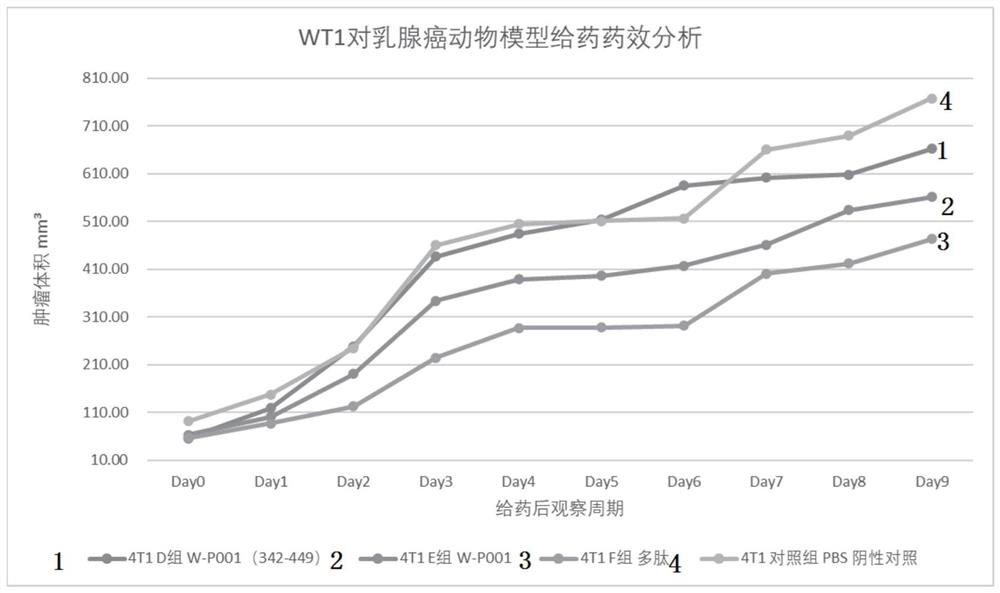WT1 polypeptide tumor inhibitor
A tumor suppressor, tumor technology, applied in the field of tumor treatment, can solve the problem of complex mechanism of anti-cancer effect
- Summary
- Abstract
- Description
- Claims
- Application Information
AI Technical Summary
Problems solved by technology
Method used
Image
Examples
Embodiment 1
[0020] According to the results of protein analysis and epitope analysis, figure 1 For WT1 antigenicity analysis, figure 2 For WT1 epitope analysis.
[0021] After codon optimization of WT1 protein, the core region sequence was selected for recombination design and split into 9 polypeptides. Its efficacy is verified by animal experiments.
[0022] The sequences of the 9 polypeptides are as follows:
[0023]
[0024]
Embodiment 2
[0026] (1) Modeling scheme
[0027] According to the experimental objectives, it is proposed to establish four animal models including rectal cancer, colon cancer, liver cancer and breast cancer
[0028] (2) Modeling process
[0029] Cultivate WT1 high expression tumor cell lines;
[0030] Transplant tumor cells into CDX mice;
[0031] CDX mouse model grows to 100mm 3 After that, the grouping is done as follows:
[0032] Negative control group (PBS), original protein W-P001 of the experimental treatment group, recombinant protein W-P001 (342-449) of the experimental treatment group, polypeptides of the experimental treatment group (9 kinds of polypeptides are mixed according to 9 equal molar parts), a total of four groups , 2 mice each.
[0033] 3. Dosing regimen
[0034] Each mouse was administered once every 5 days, 2 mg, and injected in multiple places in the mouse lymph.
[0035] Experimental results:
[0036] Preliminary results of administration of breast cancer ...
Embodiment 3
[0039] To study the antitumor effects of three drugs at different doses in CT26-hWT1 (colon cancer) and 4T1-hWT1 (breast cancer) tumor subcutaneous xenograft mouse animal models.
[0040] experimental design
[0041] This experiment mainly includes two parts: the model experiment in the early stage and the efficacy test in the later stage.
[0042] Experimental group
[0043] Control group, W-P001(342-449)(low dose), W-P001(342-449)(medium dose), W-P001(342-449)(high dose), W-P001(low dose), W-P001 (medium dose), W-P001 (high dose), peptide (low dose), peptide (medium dose) and peptide (high dose) 10 groups, 6 rats in each group, two kinds of cells, 120 rats in total.
[0044] Experimental treatment group of polypeptides (9 kinds of polypeptides were mixed according to 9 equimolar portions).
[0045] Previous model experiments:
[0046] Table 1. Experimental design of mouse subcutaneous tumor model
[0047]
[0048]
[0049] Subcutaneous efficacy test
[0050] See ...
PUM
 Login to View More
Login to View More Abstract
Description
Claims
Application Information
 Login to View More
Login to View More - R&D
- Intellectual Property
- Life Sciences
- Materials
- Tech Scout
- Unparalleled Data Quality
- Higher Quality Content
- 60% Fewer Hallucinations
Browse by: Latest US Patents, China's latest patents, Technical Efficacy Thesaurus, Application Domain, Technology Topic, Popular Technical Reports.
© 2025 PatSnap. All rights reserved.Legal|Privacy policy|Modern Slavery Act Transparency Statement|Sitemap|About US| Contact US: help@patsnap.com



